
Bc. Lenka Švábková - Chrastava: (Old)New Face
atelier: prof. Ing.arch. Zdeněk Fránek / Ing.arch. Radek Suchánek, Ph.D.
Chrastava has become the topic of my diploma thesis. Firstly, I dealt with the reason why Chrastava deserves attention at all. The answer came in the form of a brief comparison of what a small town can offer in comparison to an urban satellite (a specific comparison between Chrastava and the Liberec satellite in Staré Pavlovice). Furthermore, I was interested in the question of what is typical for Chrastava and what could simultaneously guide its future direction.
Chrastava, with its approximately 6000 inhabitants, represents a typical town of the former Sudetenland. A town that reached its peak in the first half of the 20th century in connection with a prosperous textile industry and the “German element.” Today, its face is marked by the decline of the textile industry, the years of socialism, and floods.
My work is based on observations that allowed me to identify the problems and barriers that divide the town and prevent it from functioning well as a whole. These include terrain breaks, above-ground thoroughfares through the town, heavy transit traffic, and ultimately the Jeřice River, dividing the town into two parts.
The town thus breaks down into separate islands that are essentially inaccessible to pedestrians. My main goal is to connect the town and make it passable. For this, I utilize the flow of the Jeřice River, which flows longitudinally through the entire town and can thus become its backbone. The green belt containing pedestrian paths and cycle paths is characterized by a range of different characters. I describe these in eight selected locations. “The scale of modifications corresponds to the extent of the existing barriers that Lenka encounters and also to the decision regarding which character of the immediate surroundings she wants to emphasize. We thus observe the profile of the bicycle and pedestrian path, the designation of locations for new furniture, the placement of wooden piers, proposals for demolitions and construction interventions reveal the original qualities of historical objects, the restoration of the avenue, up to the decision to divide the riverbed of the Jeřice and create a new meander.” The most significant interventions concern the location in the project marked with number 5. This place is the biggest obstacle in terms of the town's passability. “...the proposal for new development, connecting to the park along the river. Here, the identified buildings were removed, and a hierarchized public space with regulated construction is emerging.”
Another theme is the relationship between the city center and the newly proposed green belt. The goal is to interlink them. This relates to a change in the transport regime and the revival of the so-called shopping street.
Overall, I consider it essential for Chrastava to tie its future to its history and maintain continuity of development. In my work, I divide this into three steps. First, the restoration of historical functions and elements that are crucial for the town (strengthening the relationship between the city and water, restoring avenues or excursion restaurants); second, strengthening the position of significant, primarily industrial buildings through their cleaning, modification of the surroundings, and ensuring their future by finding a new function. And third, applying (not direct citations) typical architectural elements to new constructions (see studies of corners, materials, entrances).
Chrastava, with its approximately 6000 inhabitants, represents a typical town of the former Sudetenland. A town that reached its peak in the first half of the 20th century in connection with a prosperous textile industry and the “German element.” Today, its face is marked by the decline of the textile industry, the years of socialism, and floods.
My work is based on observations that allowed me to identify the problems and barriers that divide the town and prevent it from functioning well as a whole. These include terrain breaks, above-ground thoroughfares through the town, heavy transit traffic, and ultimately the Jeřice River, dividing the town into two parts.
The town thus breaks down into separate islands that are essentially inaccessible to pedestrians. My main goal is to connect the town and make it passable. For this, I utilize the flow of the Jeřice River, which flows longitudinally through the entire town and can thus become its backbone. The green belt containing pedestrian paths and cycle paths is characterized by a range of different characters. I describe these in eight selected locations. “The scale of modifications corresponds to the extent of the existing barriers that Lenka encounters and also to the decision regarding which character of the immediate surroundings she wants to emphasize. We thus observe the profile of the bicycle and pedestrian path, the designation of locations for new furniture, the placement of wooden piers, proposals for demolitions and construction interventions reveal the original qualities of historical objects, the restoration of the avenue, up to the decision to divide the riverbed of the Jeřice and create a new meander.” The most significant interventions concern the location in the project marked with number 5. This place is the biggest obstacle in terms of the town's passability. “...the proposal for new development, connecting to the park along the river. Here, the identified buildings were removed, and a hierarchized public space with regulated construction is emerging.”
Another theme is the relationship between the city center and the newly proposed green belt. The goal is to interlink them. This relates to a change in the transport regime and the revival of the so-called shopping street.
Overall, I consider it essential for Chrastava to tie its future to its history and maintain continuity of development. In my work, I divide this into three steps. First, the restoration of historical functions and elements that are crucial for the town (strengthening the relationship between the city and water, restoring avenues or excursion restaurants); second, strengthening the position of significant, primarily industrial buildings through their cleaning, modification of the surroundings, and ensuring their future by finding a new function. And third, applying (not direct citations) typical architectural elements to new constructions (see studies of corners, materials, entrances).
Citation: opponent’s review, MgA. Ida Čapounová
The English translation is powered by AI tool. Switch to Czech to view the original text source.
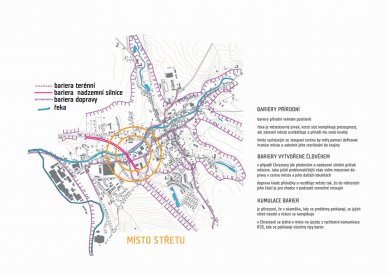


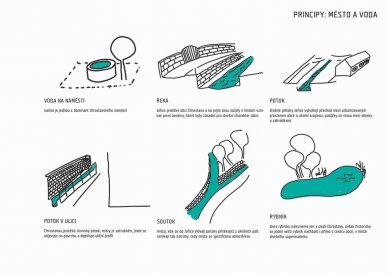
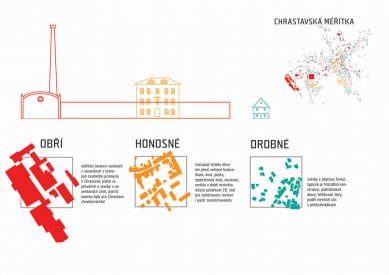
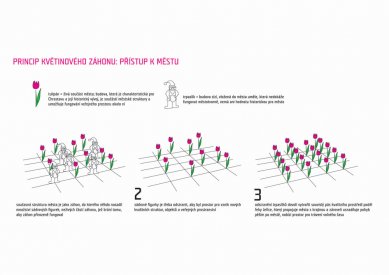


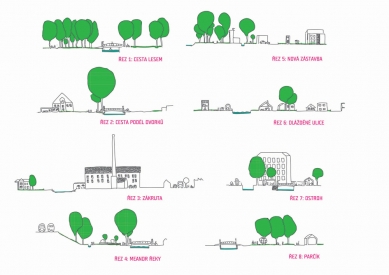
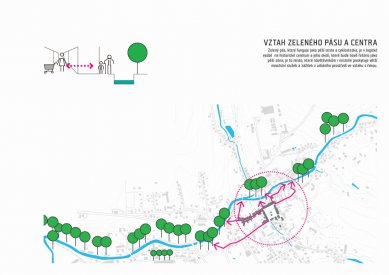
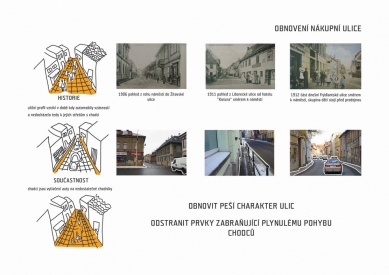
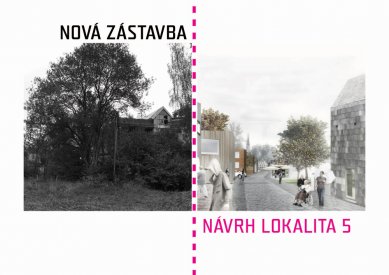
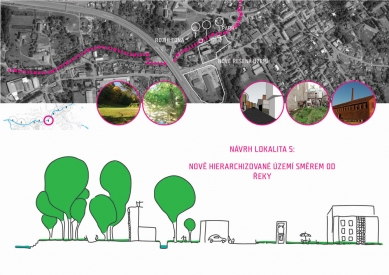

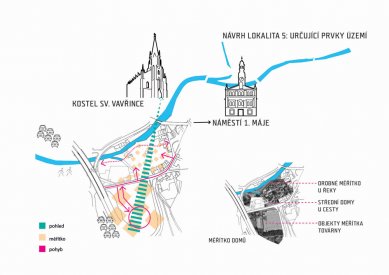
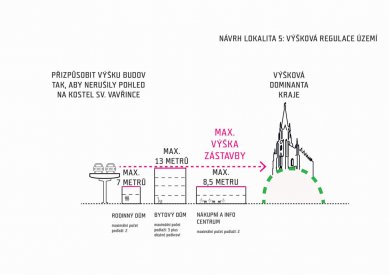
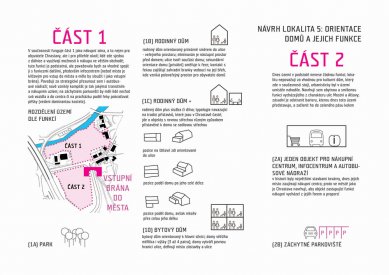

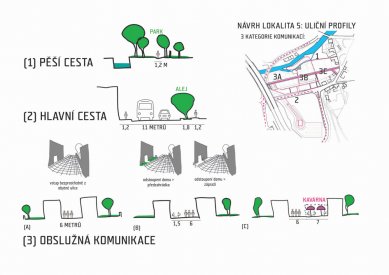
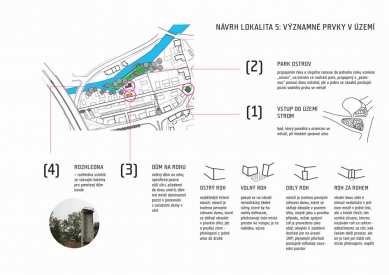
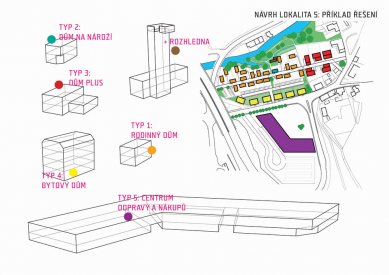
0 comments
add comment












